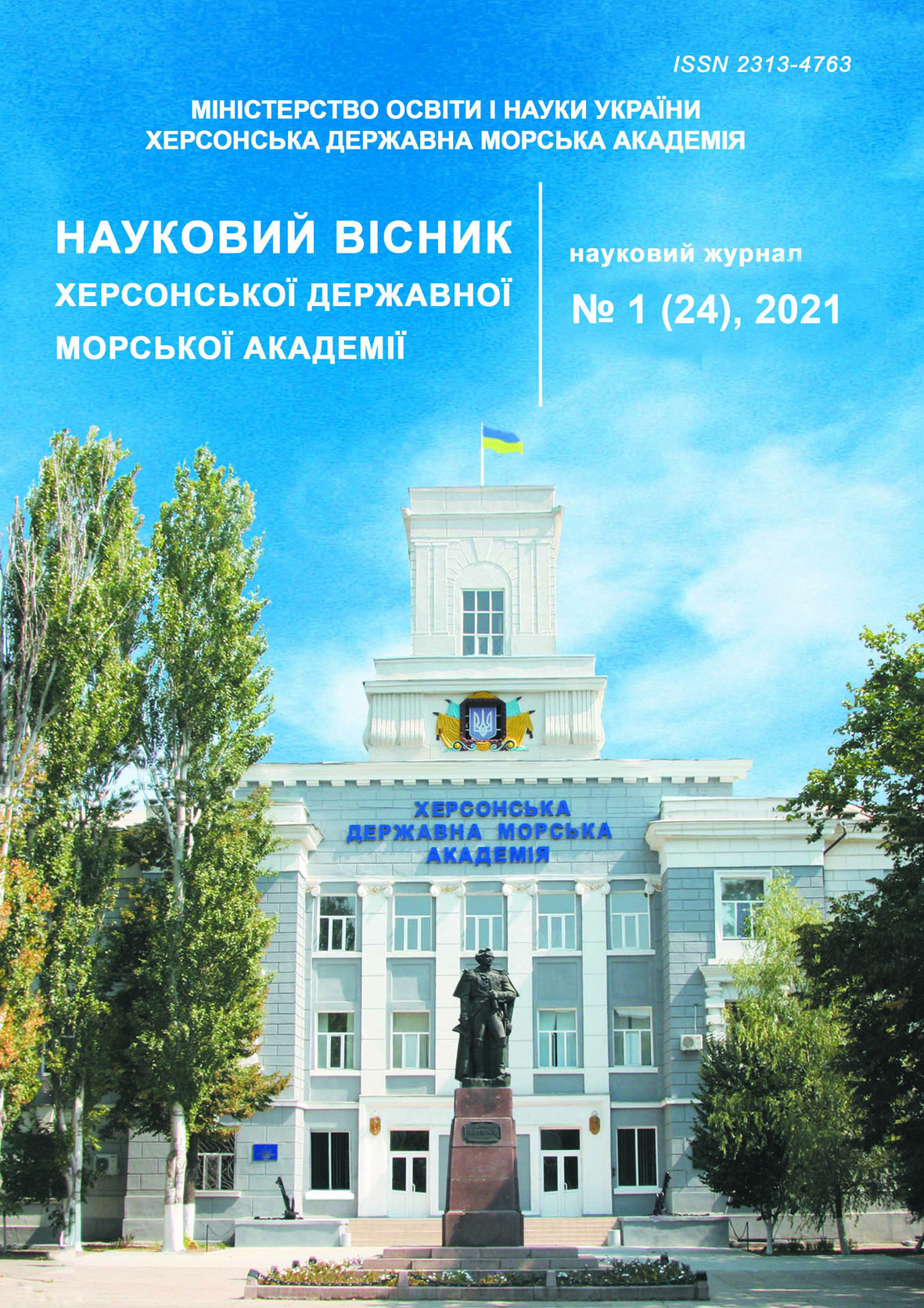INVESTIGATION OF THE EFFECT OF MODIFIER 2-BENZOFURAN-1,3-DIONE ON ADHESIVE AND PHYSICAL/MECHANICAL PROPERTIES OF EPOXY COMPOSITES
10.33815/2313-4763.2021.1.24.118–128
Abstract
The technological aspects of epoxy oligomer DER-331 modification have been given in the work. It provides high reliability and durability of the developed polymers. The influence of the phthalic anhydride (2-Benzofuran-1,3-dione) modifier content on the structure changing, adhesive and physical/mechanical
properties of the composite material has been studied. The modifier was introduced into the epoxy oligomer DER-331 at the content of q = 0.10…3.0 wt%. The cold-curing hardener triethylenetetramine TETA was used for the epoxy composition crosslinking. The polymerization temperature was T = 393 ± 2 K. Based on the results of experimental studies, the optimal content of the modifier 2-Benzofuran-1,3-dione in the epoxy matrix with improved adhesive properties has been determined. It was q = 0.10 wt% per 100 wt% of oligomer DER-331. The adhesion strength at separation was σа = 40.0 MPa, and residual stresses were σres = 1.1 MPa. The increase in adhesion properties was associated with the activation of segments of epoxy oligomer macromolecules for interaction with C=O groups of the modifier, which at the initial stage during physicochemical crosslinking ensures the orderliness of the polymer structure. The influence of the modifier content on the values of fracture stresses during the flexion (σfl), flexural modulus (E) and impact strength (W) has been investigated. It has been shown, that the values of fracture stresses significantly depend on the modifier content in the epoxy binder. The introduction of a small amount of the modifier of q = 0.10…0.5 wt% in epoxy binder provides the formation of polymeric materials with the following properties: fracture stresses were σfl = 92.8 MPa, flexural modulus was E = 3.35 GPa, impact strength was W = 17.5 kJ/m2. The increase in mechanical strength is due to the partial plasticizing action of the modifier, which provides increased mobility and deformation of the macro chains of the epoxy oligomer and allows to evenly distribute the impact load over the volume of the polymer.
References
2. Elmore J. D., Kincaid D. S., Komar P. C., Nielsen J. E. (2002). Waterborne epoxy protective coatings for metal. Journal of Coatings Technology, 74 (8), 63–72. DOI:10.1007/bf02697969.
3. Kausar A. (2020). Performance of corrosion protective epoxy blend-based nanocomposite coatings : a review. Polymer-Plastics Technology and Materials. 2020. 59 (6). P 658–673. DOI: 10.1080/25740881.2019.1673410.
4. Mochalova E. N., Limarenko N. A., Galikhanov M. F. & Deberdeev R. Y. (2016). Effect of the amount of curing agent, curing temperature, and polarization on physicomechanical characteristics of epoxyamine adhesive compositions based on DER-331 oligomer. Polymer Science Series D, Vol. 9 (4), 396–401. DOI:10.1134/s1995421216040122.
5. Odarczenko M., Thakare D., Li W., Yang K., Tang S., Venkateswaran S. P. & White S. R. (2018). Self-Protecting Epoxy Coatings with Anticorrosion Microcapsules. ACS Omega, 3(10), 14157–14164. DOI:10.1021/acsomega.8b01950.
6. Sapronov O., Maruschak P., Sotsenko V., Buketova N., De Deus A. B. D. G., Sapronova A. & Prentkovskis O. (2020). Development and Use of New Polymer Adhesives for the Restoration of Marine Equipment Units. Journal of Marine Science and Engineering, Vol. 8 (7), 527. DOI:10.3390/jmse8070527.
7. Stukhlyak D. P., Yakushchenko S. V. (2018). Influence of nanoparticles on the physical and mechanical properties of modified epoxy-composite coatings. Journal of Hydrocarbon Power Engineering, Vol. 5, 1, 14–21.
8. Buketov A. V., Kulinich V. H., Smetankin S. A., Buketova N. M. & Yatsiuk V. M. (2019). Vplyv modyfikatoriv C13H12CL2N2TA C13H14N2 na mekhanichni vlastyvosti epoksydnoi matrytsi. Naukovi notatky, 66, 37–45.
9. Elbakieva A. V., Tregubenko M. V., Kostromina N. V. & Ivashkina V. N. (2018). Svoyjstva ehpoksidnihkh svyazuyuthikh, modificirovannihkh polivinilformaljehtilalem. Uspekhi v khimii i khimicheskoyj tekhnologii : sb. naukovihkh trudov, 32,6, 202. Moskva.
10. Zakharov N. M., Alushkina T. V. (2002). Optimizaciya sostava zathitnihkh pokrihtiyj na osnove ehpoksidnihkh smol. Neftegazovoe delo : ehlektronnihyj nauchnihyj zhurnal. Retrived from http://ogbus.ru/files/ogbus/authors/Zakharov/zak_2.pdf
11. Smetankin S. O., Nihalatii V. D., Buketov A. V., Sharko O. V., Skyrdenko O. I. & Bahliuk H. A. (2016). Rozrobka modyfikovanykh polimernykh kompozytiv dlia remontu detalei enerhetychnykh ustanovok transportnykh system. Naukovyi visnyk Khersonskoi derzhavnoi morskoi akademii, 1 (14), 252–261.
12. Khodakovskyi O. V, Amelin M. Yu., Buketova N. M., Sapronov O. O. & Yatsiuk V. M. (2017). Doslidzhennia fizyko-mekhanichnykh vlastyvostei modyfikovanykh paraaminoazobenzolom epoksydnykh kompozytiv dlia remontu zasobiv transportu. Naukovyi visnyk Khersonskoi derzhavnoi morskoi akademii, 1 (16), 113–120.






